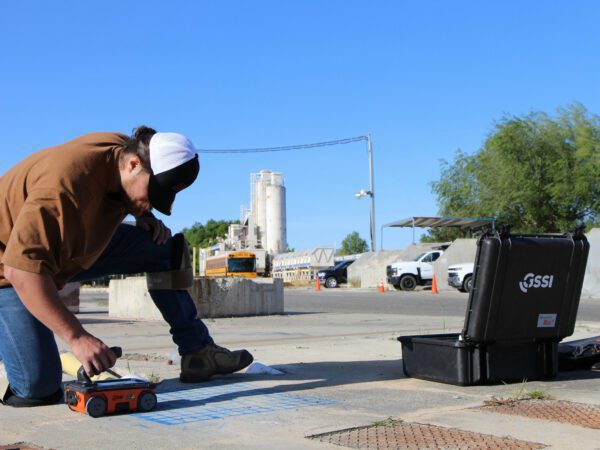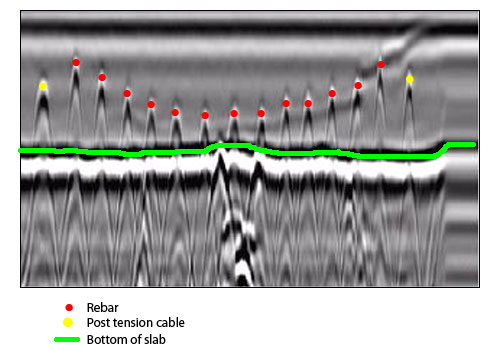Nationwide RainierGPR Service Areas for Advanced Concrete Scanning
Nationwide RainierGPR Service Areas for Advanced Concrete Scanning
Blog Article
Concrete Scanning: An Essential Step In The Direction Of Making Sure Structural Honesty and Safety
In the world of building and construction and framework upkeep, the importance of concrete scanning can not be overstated. This thorough procedure holds the essential to revealing prospective dangers hidden under the surface of apparently solid structures. By using innovative modern technology and methods, concrete scanning works as a pivotal device in making sure that the stability and security of structures and bridges are supported to the highest possible requirements. Nonetheless, beyond its surface-level implications, the function of concrete scanning expands much much deeper than satisfies the eye.
Importance of Concrete Scanning
Concrete scanning plays an important role in ensuring the architectural stability and safety of buildings and infrastructure projects. By making use of innovative technologies such as ground-penetrating radar (GPR) and electro-magnetic induction, experts can non-destructively examine concrete frameworks to identify possible flaws, spaces, embedded objects, and reinforcement design. This process allows early detection of abnormalities that could compromise the stability of a framework, avoiding costly damages and making certain the safety of passengers.
Concrete scanning is especially essential during the preparation and construction phases of a task. Before exploration, cutting, or coring into concrete, scanning assists determine the specific places of rebar, post-tension cords, and various other embedded aspects, reducing the danger of unintentional hits that could lead to architectural weak points. Furthermore, concrete scanning help in top quality control by verifying the thickness of concrete covers and discovering any kind of disparities that may influence the general durability of the structure. Inevitably, purchasing concrete scanning solutions is not only a proactive step to mitigate dangers but also an essential action towards maintaining the long-term security and stability of structures and framework.
Modern Technology for Concrete Examination

Benefits of Very Early Detection
Prompt discovery of structural concerns can significantly minimize risks and make certain the longevity of building and construction tasks. By determining prospective issues early on in the construction procedure, stakeholders can take positive steps to resolve concerns before they rise right into bigger and extra costly troubles. Among the vital benefits of early detection is the prevention of structural failures, which can posture major safety and security dangers and cause job delays and monetary losses.
Moreover, early detection allows for timely fixings and maintenance, which can help prolong the life expectancy of the structure. By attending to concerns quickly, construction groups can avoid costly fixings or also the requirement for premature substitute of structural components. This proactive method not just saves time and cash yet also boosts the general security and longevity of the building job.
Furthermore, very early detection can improve task preparation and decision-making by giving stakeholders with beneficial understandings into the condition of the structure. Equipped with this info, job supervisors can make informed choices pertaining to building methods, materials, and timelines, resulting in extra effective and efficient job results.
Guaranteeing Structural Stability
Making sure the architectural security of a building task is paramount to its safety and security and long life. Concrete scanning plays a critical role in making sure architectural stability by spotting prospective problems such my explanation as voids, delamination, or support corrosion that can compromise the stability of the structure over time.
By making use of sophisticated scanning technologies like ground-penetrating radar (GPR) and electromagnetic induction, construction specialists can non-invasively evaluate concrete frameworks to identify locations of worry under the surface area. This positive technique permits the early detection of defects or weaknesses, making it possible for punctual repairs or support to avoid structural failings.
Normal concrete scanning throughout different building stages and throughout the life cycle of a structure can aid maintain its stability, reduce risks, and ensure the safety of owners. By prioritizing architectural stability through concrete scanning, construction projects can enhance their strength and durability, inevitably adding to better safety and security and long life.

Stopping Vital Failures
Carrying out routine assessments, such as concrete scanning, can expose covert flaws like gaps, cracks, or rust that can compromise the stability of a structure. By using sophisticated scanning modern technologies like go to my site Ground Passing through Radar (GPR) or Concrete X-ray, designers can non-destructively assess the condition of concrete and determine weak points that need reinforcement or repair service.

Verdict
To conclude, concrete scanning plays a vital function in making sure architectural stability and safety and security by making use of innovative modern technology for very early check discovery of prospective problems. This proactive strategy helps protect against vital failings and makes certain the security of structures. It is vital to prioritize concrete evaluation as a typical technique to secure the longevity and security of structures and infrastructure.
Concrete scanning plays a vital function in ensuring the architectural honesty and safety of buildings and framework jobs. In addition, concrete scanning aids in quality control by verifying the density of concrete covers and finding any type of discrepancies that might impact the overall resilience of the framework. Concrete scanning plays a vital function in ensuring architectural stability by identifying prospective issues such as gaps, delamination, or reinforcement deterioration that might compromise the honesty of the structure over time.

In conclusion, concrete scanning plays an important duty in guaranteeing structural stability and security by making use of sophisticated technology for very early discovery of possible problems.
Report this page